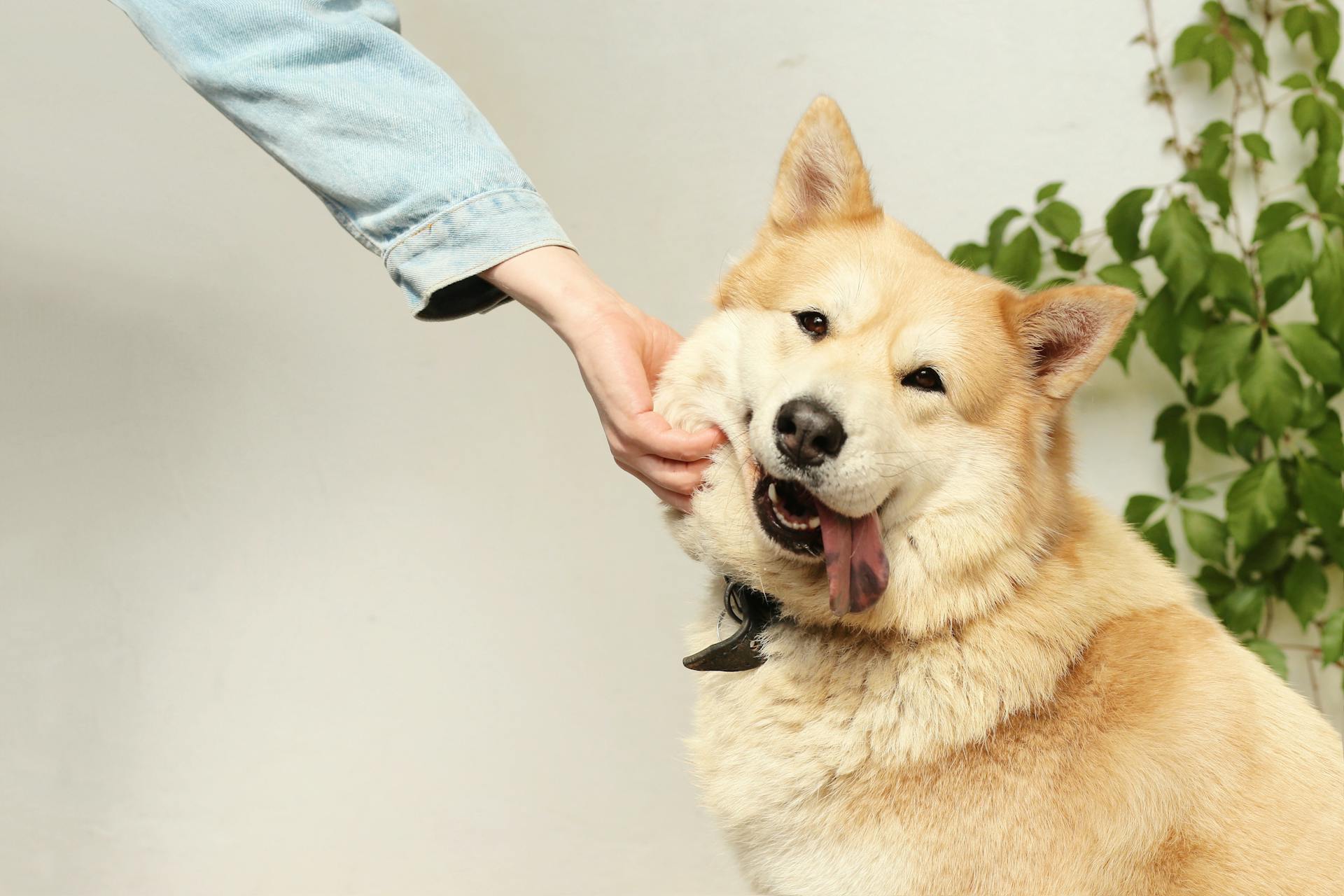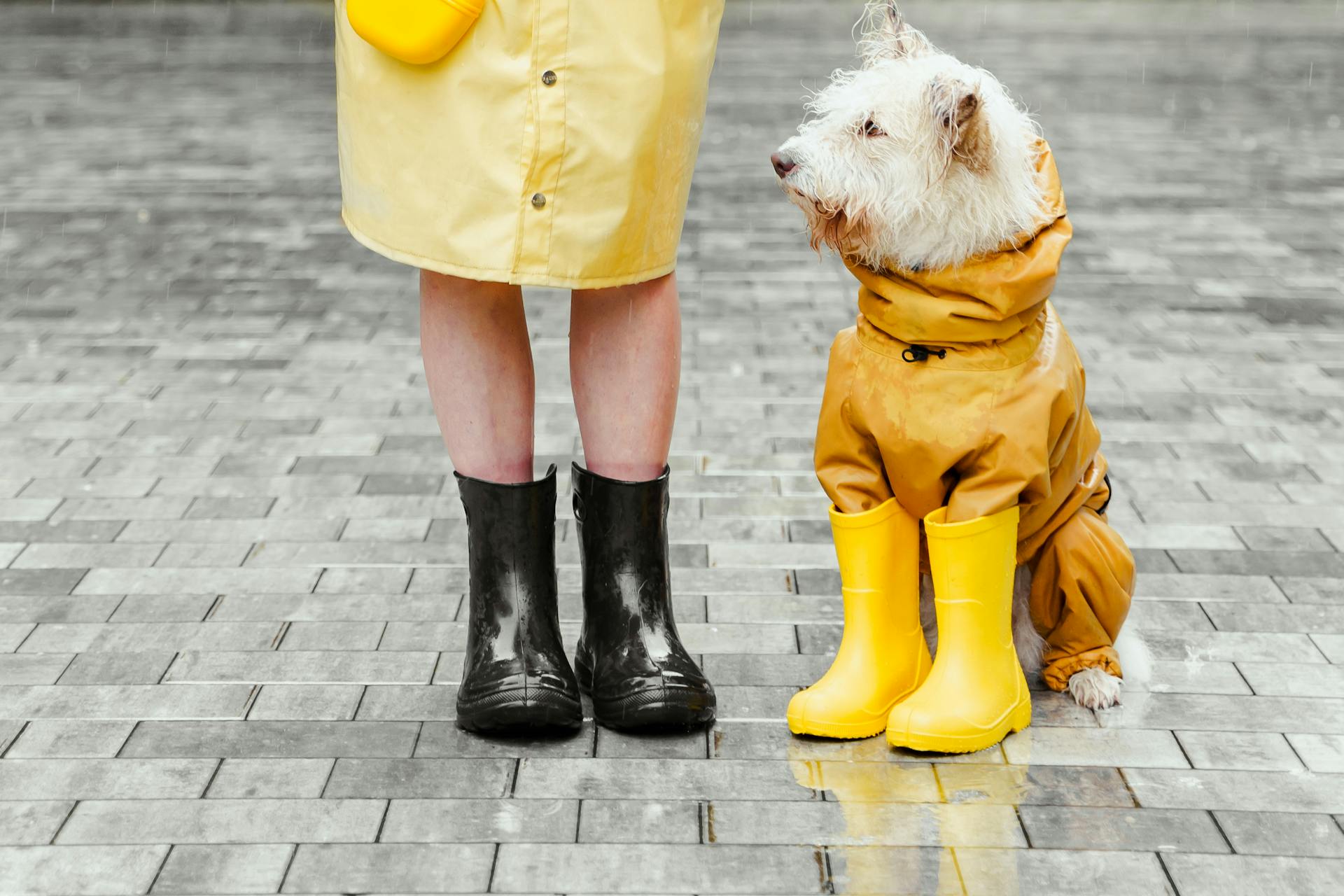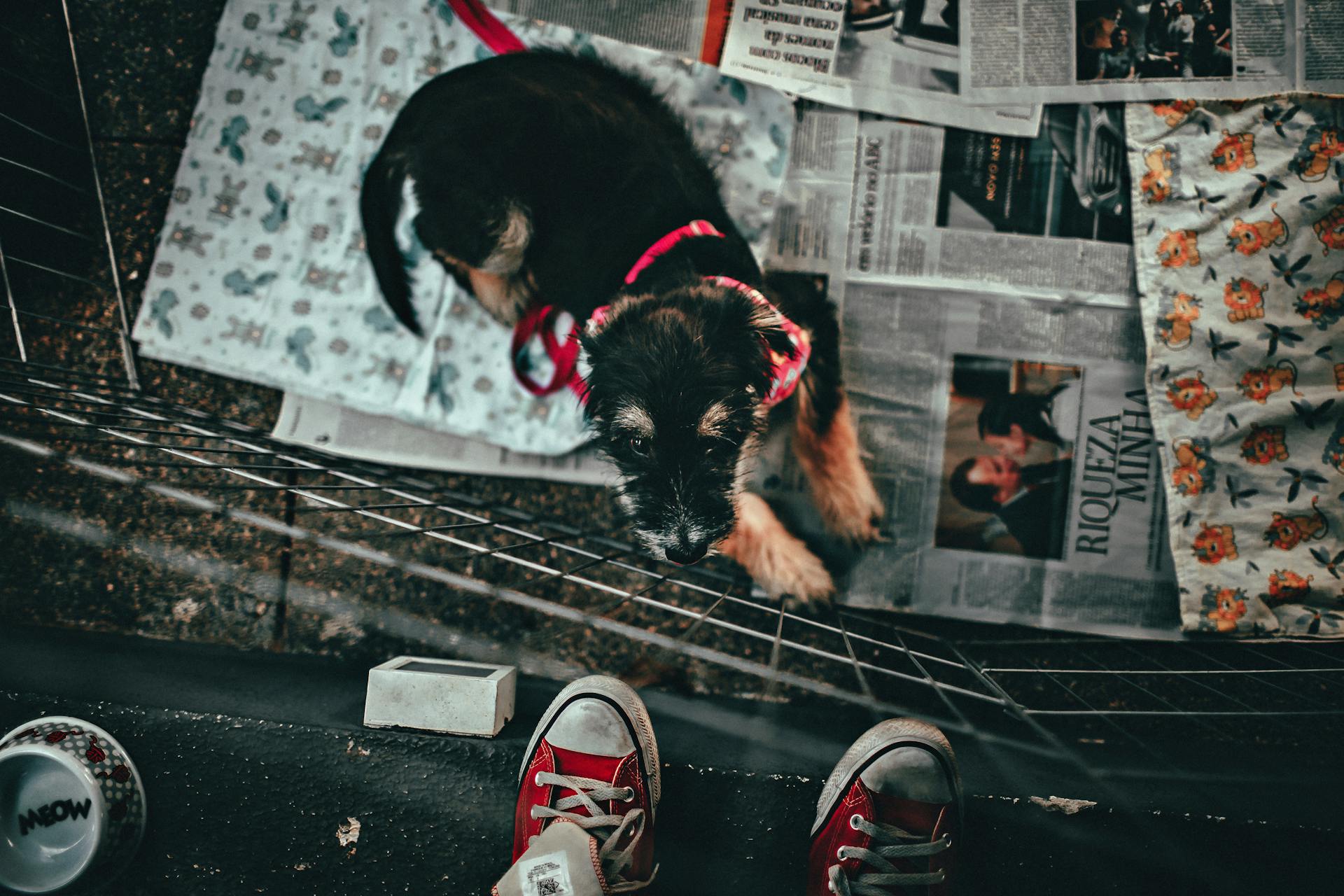
As a Bernedoodle owner, you're likely wondering what to expect from your dog's color change and adult coat development. This process can be fascinating, but also a bit confusing, especially if you're new to the breed.
Bernedoodles typically experience a significant color change between 6-18 months of age, as their adult coat begins to emerge. This is a natural process, and it's essential to understand what to expect.
During this time, your Bernedoodle's fur may become lighter or darker, and their coat may become more uniform. Some Bernedoodles may even develop a secondary coat, which can be a beautiful, longer layer of fur.
As your Bernedoodle's adult coat develops, their color will become more stable and predictable. However, it's not uncommon for Bernedoodles to retain some of their puppy coat characteristics, such as a soft, curly texture.
For your interest: Rabbits Fur Change Color
Doodle Coat Colors
Bernedoodles come in a wide range of beautiful coat colors and patterns, including tri-colored, merle, parti, sable, phantom, jet black, chocolate, and white.
The traditional tri-colored Bernedoodles inherit their coat colors from the purebred Bernese Mountain Dog, while the gorgeous patterns like merle and parti come from the Poodle's side of their lineage.
Some Bernedoodles have solid coat colors, such as jet black, chocolate, or white, that are simply stunning.
A Bernedoodle's coat color is determined by its heritage, which is a combination of the Bernese Mountain Dog and Poodle breeds.
The Bernese Mountain Dog's side of the family is known for its common colors, such as black, white, and tan, which can influence the Bernedoodle's coat color.
Poodles, on the other hand, are known for their variety of colors, including black, white, silver, and apricot, which can also impact the Bernedoodle's coat color.
By understanding the heritage of the Bernedoodle, you can better predict the possible coat colors and patterns your Bernedoodle puppy may have.
You might enjoy: Bernedoodle vs Bernese Mountain Dog
Color Changes in Bernedoodles
Bernedoodles are known to carry the fading gene, which can cause their color to fade once they reach adulthood. This usually happens between 6 to 10 months of age.
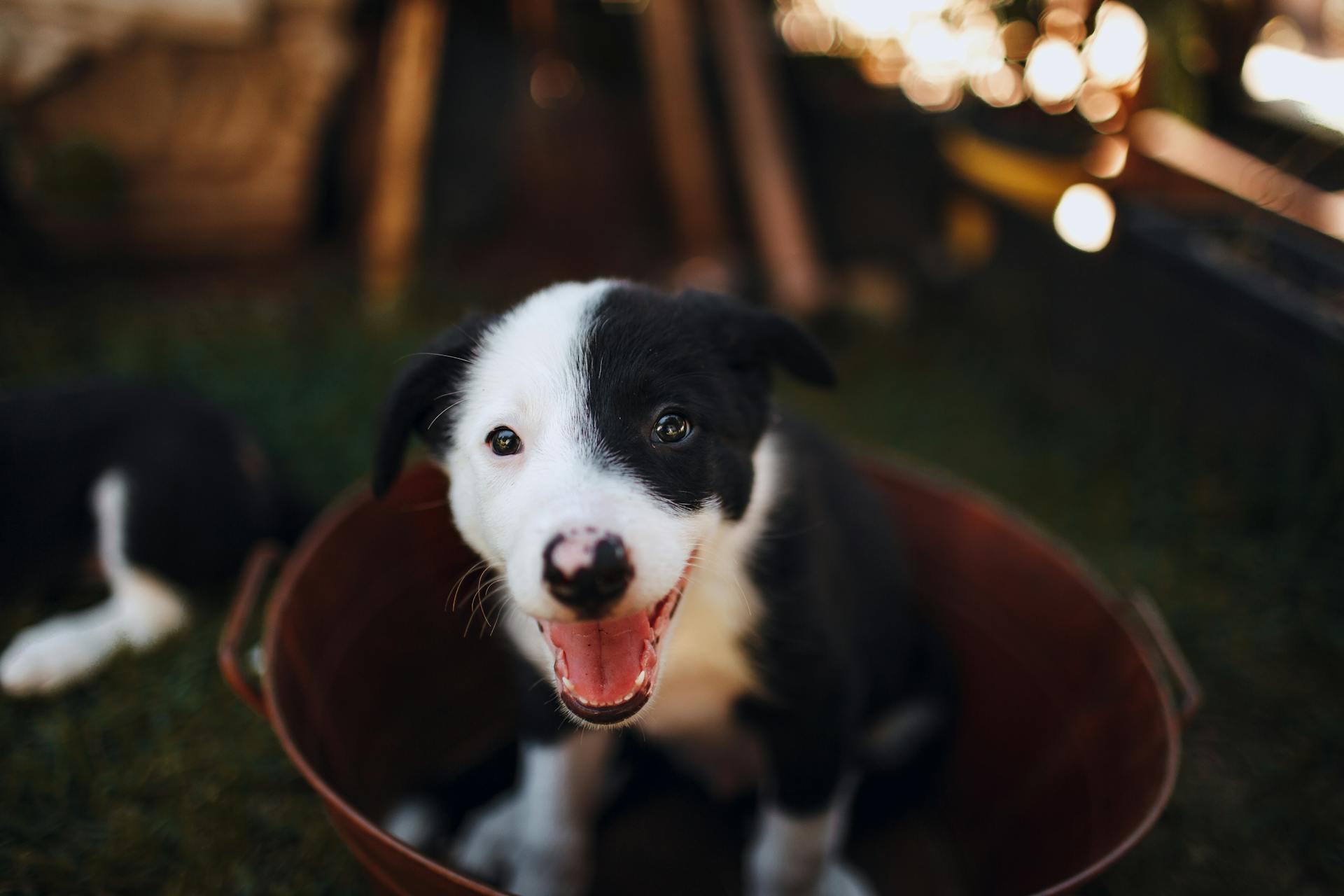
The fading, also known as clearing, is most noticeable in darker colored Bernedoodles. Black Bernedoodles with the fading gene often change into silver, gray, or bluish tones.
Chocolate or brown Bernedoodles can turn silver, cream, or silver beige over time. This color change is a natural process and not a cause for concern.
Related reading: Bernedoodles and Goldendoodles
Specific Colors
A Bernedoodle's coat can be a stunning tri-color, featuring a mix of black, white, and tan. In fact, the traditional tri-colored Bernedoodle is a result of inheriting coat colors from the purebred Bernese Mountain Dog.
Some Bernedoodles may also inherit gorgeous patterns like merle, parti, sable, or phantom from the Poodle's side of their lineage. These patterns can add a unique touch to their coat.
Jet black, chocolate, or white solid colors are also possible in Bernedoodles. You might be surprised by how beautiful these solid colors can look on a Bernedoodle's coat.
In rare cases, a Bernedoodle may come with an all-white coat, especially in backcross generations where the majority of their genetic makeup comes from the Poodle.
You might enjoy: Teacup Poodle Health Issues
Merle
Merle Bernedoodles are a rare and stunning variation of the breed. They have a solid base color with speckled patches of diluted colors throughout the coat.
The merle coat gene is not as common in either Poodles or Bernese Mountain Dogs, but it can be passed onto the Bernedoodles when one of the parents is carrying the merle gene.
A higher chance of achieving a merle Bernedoodle pup is by crossing a Poodle with a merle Bernedoodle, but this is not the only way. Some merle Bernedoodles can also be the result of breeding a Poodle with a Poodle that carries the merle gene.
The merle pattern is created by a recessive gene passed down from their Poodle ancestors, making it a unique and striking appearance. This pattern is often mixed with white markings, but the dominant feature is the swirling contrast between deep and lighter tones.
Here are the key characteristics of the merle Bernedoodle pattern:
- Base Color: Rich chocolate brown (as seen in the Chocolate Merle variation)
- Markings: Merle mottling with occasional white markings on chest, face, or paws
- Eyes: Blue, brown, or hazel
The merle pattern is considered one of the rarer variations in Bernedoodles, making each dog a unique and special companion.
Red and White
The "Red and White" Bernedoodle is a stunning variant that showcases a rich, red coat with stark white markings.
This color pattern is quite rare, which makes "Red and White" Bernedoodles particularly sought after.
The red shade can vary from a bright, coppery red to a deeper, rust-like red, contributing to the distinctiveness of each individual dog.
Typically, the white appears prominently on the chest, paws, and along the facial area, often including a distinct white blaze on the forehead.
Sable
Sable Bernedoodles have a solid base color, but the hairs have black tips, creating a dynamic contrast as the coat moves.
Their coat color can vary widely among individuals, with some having a pronounced sable pattern and others more subtle.
The sable palette can range from brown to silver, reflecting their diverse genetics.
In merle sable Bernedoodles, this sable pattern is combined with the merle gene, adding a marbled effect with shades of grey, black, and white.
Sable Bernedoodles often experience color changes as they grow, potentially shifting from darker to lighter shades or vice versa.
Their color can start to fade much lighter as they reach adulthood, a process known as "clearing."
Worth a look: Brown Merle Bernedoodle
Tri-Color
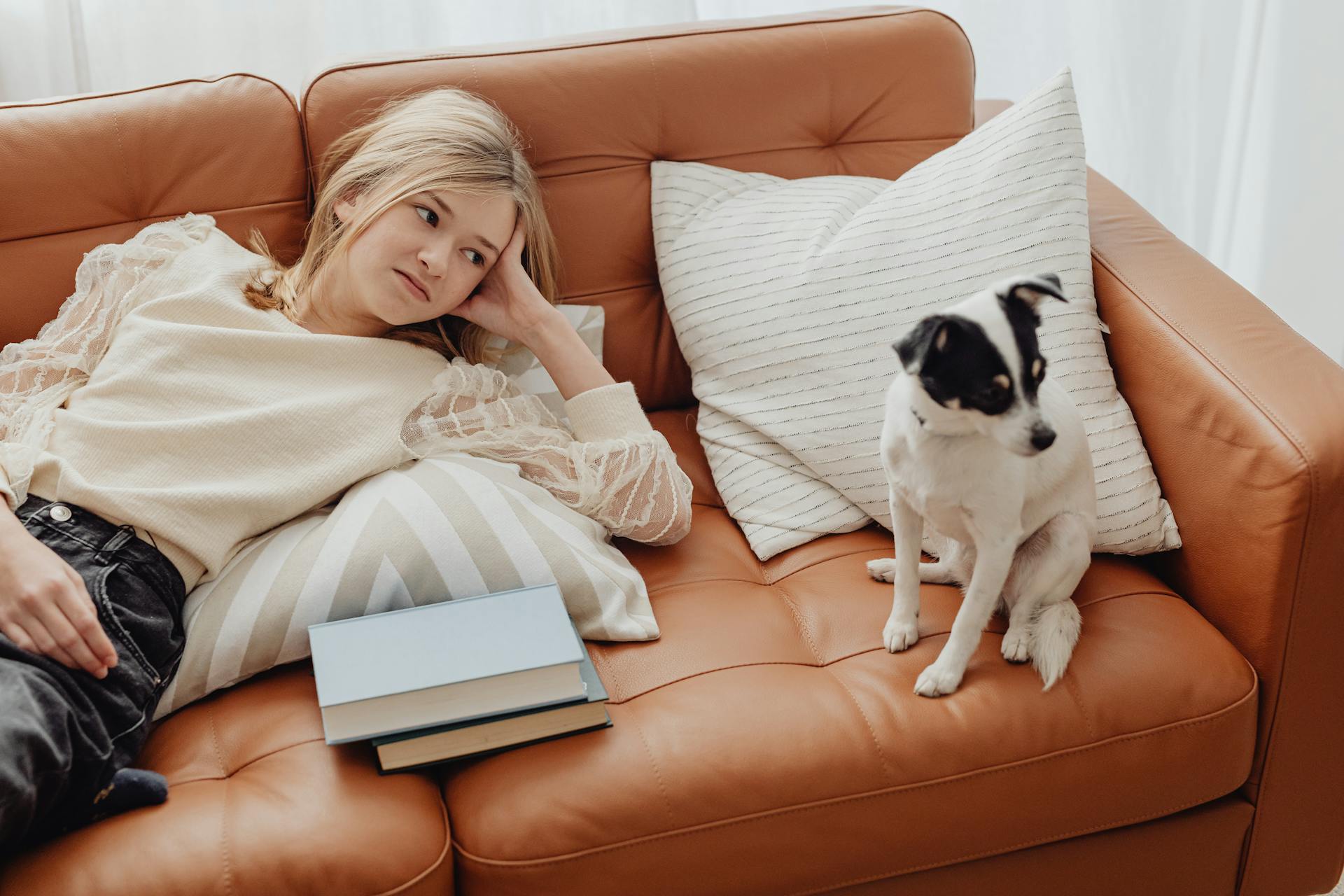
The tri-color Bernedoodle is a stunning sight to behold, with its three distinct colors on the coat. The dominant base color is usually darker, setting the tone for the rest of the color combination.
The tri-color pattern features a mix of colors like black, brown, tan, rust, apricot, red, white, and cream. This variety of colors creates a unique and beautiful appearance.
With white markings found on the face, chest, feet, and paws, the tri-color Bernedoodle is a true showstopper. These markings add a touch of elegance to the overall look.
The tri-color Bernedoodle's color combination is inspired by the Bernese Mountain Dog parent, making it a nod to the breed's heritage. This pattern is one of the more traditional Bernedoodle colors, making it a popular choice among Bernedoodle enthusiasts.
As you can see, the tri-color Bernedoodle's color combination is a true masterpiece, with its mix of darker and lighter colors creating a beautiful contrast.
See what others are reading: Tri Color Bernedoodle
Phantom
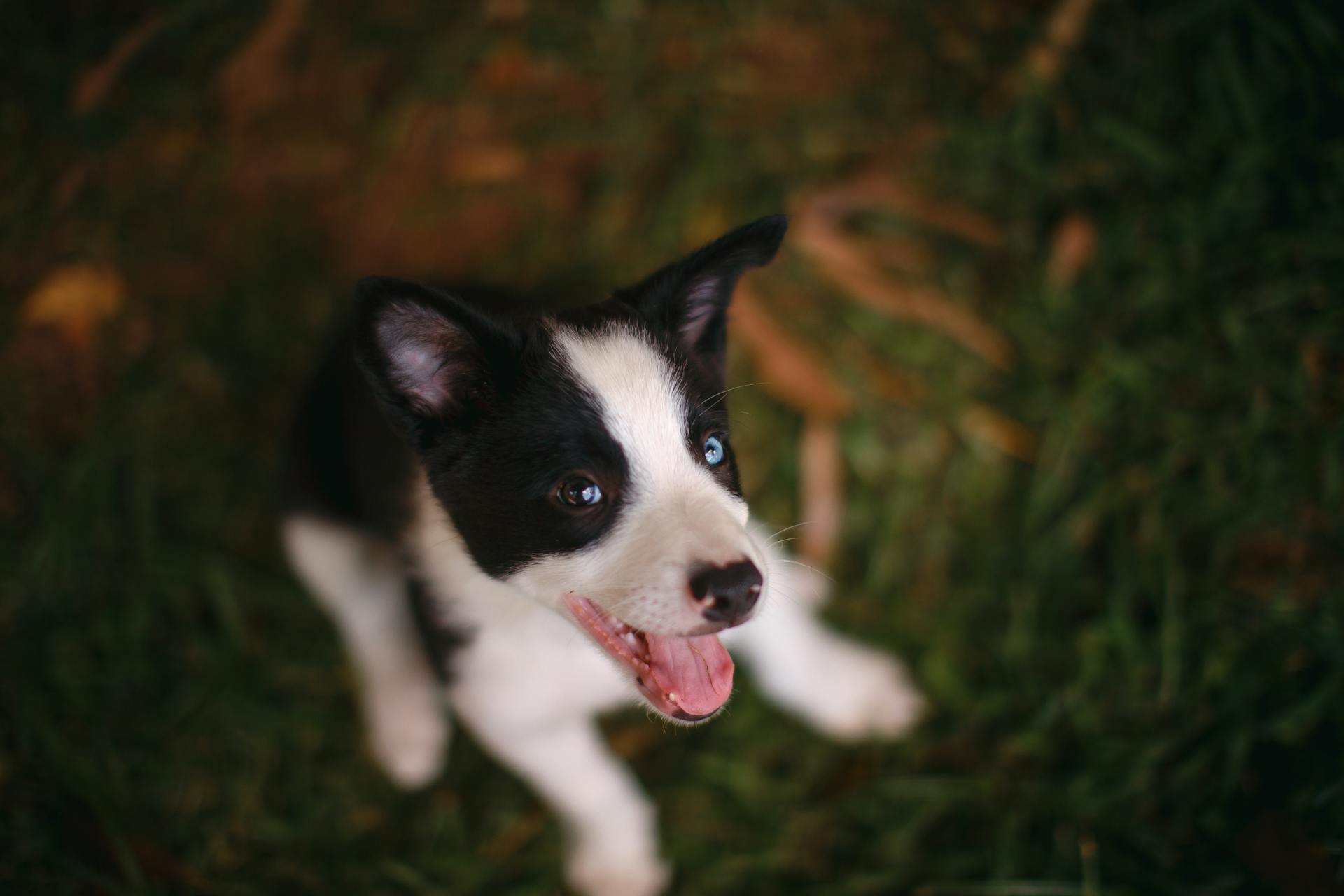
Phantom Bernedoodles have less white markings and more brown hues in their coats, making them a unique and beautiful color combination.
The most common phantom combination is black and tan, where dominant black color covers the body and tan markings appear on the face, chest, legs, and paws.
Phantom Bernedoodles can be a bit harder to find compared to other Bernedoodle colors, but they're certainly worth the search.
Since the phantom color is a result of the Poodle's influence, it's more commonly found in F1b and later generations of Bernedoodles.
Phantom Bernedoodles are a stunning addition to any family, and their beautiful coats make them a joy to be around.
Related reading: Bernedoodle Tan
Color Types
Bernedoodles come in a wide array of different colors and patterns, with traditional tri-colored Bernedoodles inheriting their coat colors from the purebred Bernese Mountain Dog.
Their coat colors can range from solid colors like jet black, chocolate, or white to stunning patterns like merle, parti, sable, or phantom that come from the Poodle's side of their lineage.
The "Red and White" Bernedoodle is a rare and sought-after color pattern, featuring vivid red fur with stark white markings, and is characterized by a bright, coppery red to a deeper, rust-like red.
This color pattern is visually appealing, with white markings prominently on the chest, paws, and along the facial area, often including a distinct white blaze on the forehead.
Bernedoodles can also exhibit solid colors, such as jet black, chocolate, or white, which are simply irresistible.
Their color inheritance is a result of combining two purebred dogs, leading to many possible variations and outcomes.
The Bernese Mountain Dog side of the family often contributes to the Bernedoodle's color palette, while the Poodle's side adds its own unique colors and patterns.
The resulting color combinations can be quite stunning, making each Bernedoodle truly unique.
For your interest: How Often Should I Change My Dogs Food
Frequently Asked Questions
What is the rarest Bernedoodle color?
The rarest Bernedoodle colors include bi-color black and white, sable, phantom, merle patterns, solid black, and solid white. Among these, bi-color black and white is often considered the rarest and most sought-after color combination.
Do Bernedoodles lose their brown?
Brown markings on Bernedoodles may fade over time, especially in traditional tricolors and some red sables, but this can vary from dog to dog
How to tell if your doodle will fade?
Check for white hairs under your doodle's paws at birth, or look for lightening starting as early as 4-6 weeks, especially in parti-colored puppies. If you notice these signs, it may indicate your doodle will fade over time.
Sources
- https://www.downhomedoodle.com/post/bernedoodles-bernedoodle-coat-colors-revealed
- https://www.oodlesofbernedoodles.com/coat-colors
- https://www.thepuppyacademy.com/blog/2022/2/7/a-guide-to-puppy-breeds-bernedoodles
- https://www.jennaleedoodles.com/post/how-can-i-tell-what-my-doodle-will-look-like-as-an-adult
- https://doodledoods.com/bernedoodle-colors-patterns/
Featured Images: pexels.com
